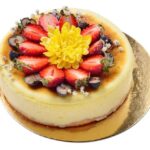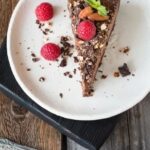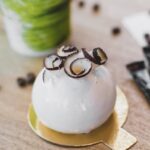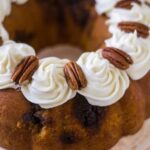Are you ready to learn how to decorate a layer cake like a pro? Whether you’re a baking enthusiast or just looking to impress your friends and family with a stunning dessert, mastering the art of layer cake decorating is sure to elevate your baking skills.
In this article, we’ll explore the essential tools and materials needed for decorating a layer cake, tips for choosing the right cake for layering, step-by-step instructions for assembling and layering the cake, techniques for crumb coating and frosting, as well as creative ideas for finishing touches and garnishes.
Decorating a layer cake is more than just slapping on some frosting – it’s an art form that requires patience, precision, and creativity. With the right techniques and know-how, you can turn a simple cake into a show-stopping masterpiece that will leave everyone in awe. From piping and decorating with buttercream to using fondant and other decorative elements, there are endless possibilities for creating a beautifully decorated layer cake that tastes as good as it looks.
Whether you’re new to baking or have some experience under your belt, this article will guide you through the process of decorating a layer cake from start to finish. By the end of this journey, you’ll be equipped with all the knowledge and skills needed to celebrate your very own masterpiece that is sure to impress anyone who lays eyes on it.
So let’s dive in and discover the secrets to creating stunning layer cakes that are not only delicious but also visually stunning.
Essential Tools and Materials for Decorating a Layer Cake
Decorating a layer cake requires the right tools and materials to achieve a professional and beautiful finish. In order to create stunning designs and intricate decorations, it is essential to have the necessary equipment at hand. Some of the most important tools for decorating a layer cake include offset spatulas, cake turntables, piping bags and tips, bench scrapers, and a variety of decorating combs for creating different textures on the frosting.
Offset spatulas are crucial for spreading frosting evenly on each layer of the cake, while a cake turntable makes it easier to decorate by allowing for smooth and consistent rotations. Piping bags and tips are used for creating decorative elements such as borders, flowers, and other designs with precision. Bench scrapers help in achieving clean and sharp edges on the sides of the cake, while decorating combs can be used to create intricate patterns on the frosting.
In addition to these tools, having the right materials is also important for successful layer cake decorating. Quality ingredients for making buttercream or fondant are essential, as well as food coloring gels for adding vibrant colors to the decorations.
Edible embellishments such as sprinkles, edible pearls, chocolate shavings, or fresh fruit can also be used to enhance the visual appeal of the cake. By having these essential tools and materials at your disposal, you will be well-equipped to create beautifully decorated layer cakes that are sure to impress.
Choosing the Right Cake for Layering
A light and airy chiffon or angel food cake may not be the best choice for layering, as they can be too delicate and prone to crumbling. It’s also important to consider the flavor of the cake and how it will complement the filling and frosting. For example, a red velvet cake pairs well with cream cheese frosting, while a lemon sponge cake goes perfectly with tangy lemon curd filling.
When choosing a cake for layering, it’s essential to consider the height of the layers you want to achieve. If you prefer taller layers, you may need to adjust the recipe to make thicker cakes or bake multiple layers. Additionally, it’s important to ensure that the cakes are completely cooled before assembling and frosting to prevent them from becoming too soft and difficult to work with.
Lastly, if you’re short on time or prefer not to bake from scratch, pre-made cake mixes can also be used for layer cakes. Just make sure to follow the instructions on the box carefully and adjust accordingly if you require a larger quantity or customized flavor. With these considerations in mind, choosing the right cake for layering sets the foundation for creating a stunning and delicious layer cake masterpiece.
| Cake Type | Recommended Pairings |
|---|---|
| Classic Vanilla Sponge Cake | Fresh berries with vanilla buttercream |
| Chocolate Butter Cake | Chocolate ganache with raspberry filling |
| Dense Pound Cake | Lemon curd with whipped cream frosting |
Step-by-Step Guide to Assembling and Layering the Cake
When it comes to creating a stunning layer cake, the assembly and layering process is crucial for achieving a professional-looking result. To begin, ensure that you have all your cake layers baked and cooled completely. It’s important to level each layer using a serrated knife or a cake leveler to remove any domed tops, creating an even surface for stacking.
Once your cake layers are prepared, place the first layer on a cake board or serving plate, securing it in place with a small amount of frosting. This will prevent the cake from sliding as you continue to build the layers. Next, add a generous amount of frosting or filling on top of the first layer and use an offset spatula to spread it evenly to the edges. Repeat this process with each subsequent layer until all layers are stacked.
After assembling the layers, it’s important to press down gently on the top of the cake to ensure that they are well-aligned and secure. You can also use a long, flat tool such as a bench scraper or ruler to help with this step. Once your layers are stacked and aligned, it’s time to move on to crumb coating and frosting the entire cake to create a smooth base for decorating.
Taking the time to properly assemble and layer your cake sets the foundation for successful decorating. Following these step-by-step instructions will help you achieve a beautifully layered cake that is ready for the next stages of decoration.
Tips for Crumb Coating and Frosting a Layer Cake
When it comes to decorating a layer cake, one of the most important steps is crumb coating and frosting. This essential part of the process not only helps to smooth out any imperfections in the cake’s surface but also provides a base for adding decorative elements. Here are some tips for achieving a professional-looking finish when crumb coating and frosting your layer cake:
- Start with a chilled cake: Before you begin the crumb coating process, make sure your cake layers are completely cooled and chilled. This will make them easier to work with and will help prevent crumbs from mixing into the frosting.
- Apply a thin layer of frosting: To create a crumb coat, spread a thin layer of frosting over the entire surface of the cake. This initial layer will seal in any crumbs and create a smooth foundation for the final coat of frosting.
- Chill the cake before adding the final coat: Once you’ve applied the crumb coat, place the cake in the refrigerator to allow the frosting to set. This will make it easier to add the final layer of frosting without disturbing the crumb coat.
By following these tips, you can ensure that your layer cake has a flawless finish that is ready for additional decorations.
After mastering the art of crumb coating, it’s time to move on to applying the final coat of frosting. Whether you’re using buttercream or another type of frosting, here are some tips for achieving a beautifully frosted layer cake:
- Use an offset spatula: An offset spatula is an invaluable tool for spreading and smoothing frosting onto a cake. The angled blade makes it easy to maneuver around curved surfaces and create clean edges.
- Work quickly and efficiently: Frosting can become more difficult to work with as it starts to dry out, so aim to cover the entire cake in one go. If necessary, take short breaks to allow your hand and mind a rest – but don’t stop halfway through.
- Add texture or designs: Consider experimenting with different techniques for adding texture or designs to your final frosting layer. From simple swirls created with an icing comb to intricate patterns made with piping tips, there are countless ways to personalize your layer cake.
With these tips in mind, you’ll be well on your way to creating a stunning frosted masterpiece that is ready for additional decorative touches.
Techniques for Piping and Decorating With Buttercream
When it comes to decorating a layer cake, using buttercream is a popular and versatile option. This creamy and smooth frosting can be used for a variety of decorating techniques, from piping borders to creating intricate designs. Learning how to work with buttercream can take your layer cake from ordinary to extraordinary.
Piping Borders and Designs
One of the most common techniques for decorating with buttercream is piping borders and designs on the cake. Using a piping bag fitted with various tips, you can create different shapes and patterns on the top and sides of the cake. For a simple yet elegant look, try creating a classic shell border around the edges of each layer. If you’re feeling more adventurous, experiment with different tip shapes to create flowers, rosettes, or intricate lace-like designs.
Creating Textured Finishes
Buttercream can also be used to create textured finishes on the cake for a unique and visually appealing look. Whether you prefer a smooth and polished finish or a more rustic and textured appearance, buttercream allows for endless possibilities. Use an offset spatula to create swoops, swirls, or peaks in the frosting to add visual interest and dimension to your cake.
Coloring and Flavoring Buttercream
In addition to different decorating techniques, consider adding color and flavor to your buttercream to further enhance the visual appeal of your layer cake. Gel food coloring allows you to achieve vibrant shades without altering the consistency of the frosting. Additionally, you can experiment with different extracts or flavorings such as vanilla, almond, or citrus to complement the flavor of your cake.
Mastering the art of piping and decorating with buttercream takes practice, but with time and patience, you can create stunning layer cakes that are sure to impress any crowd. The versatility of buttercream allows for endless creativity in design and decoration, making it a go-to choice for both beginner and experienced bakers alike.
Using Fondant and Other Decorative Elements
Fondant is a versatile and popular choice for decorating layer cakes. It provides a smooth, professional finish that can be molded into various shapes and designs. To use fondant, you will need to have a rolling pin, cornstarch or powdered sugar for dusting, and various shape cutters or molds. Start by kneading the fondant until it is pliable, then roll it out to the desired thickness before carefully transferring it onto the cake.
In addition to fondant, there are other decorative elements that can enhance the visual appeal of your layer cake. This includes edible flowers, fresh berries or fruits, chocolate curls or shavings, edible glitter or metallic accents, and more. When using these elements, consider the flavor profile of your cake and choose complementary decorations that will not only look beautiful but also taste delicious.
When adding decorative elements to your layer cake, consider the overall design and theme you want to achieve. Whether you’re going for a rustic look with fresh flowers and fruits or an elegant design with intricate fondant details, each element should contribute to the cohesive aesthetic of the cake. Remember to have fun and be creative with your choices, as they can truly make your layer cake stand out as a masterpiece.
Creative Ideas for Finishing Touches and Garnishes
Once your layer cake is assembled, crumb coated, and frosted, it’s time to add the final touches that will truly make your cake stand out. One popular option is to use fresh fruit as a garnish. Not only does it add color and vibrancy to the cake, but it also provides a refreshing contrast to the sweetness of the frosting. Berries, citrus slices, and kiwi are all great options for adding a pop of freshness to your creation.
Another creative idea for finishing touches is to incorporate edible flowers into your design. Flowers such as lavender, roses, and pansies can add an elegant and whimsical touch to any cake. Just be sure to verify that the flowers you choose are safe for consumption and have not been treated with any harmful chemicals.
For those looking for a more decadent finishing touch, consider incorporating chocolate or caramel drizzles into your design. These sweet additions can add an extra layer of richness and depth to the flavor profile of the cake while also creating visually stunning patterns on top of the frosting.
Remember that when it comes to finishing touches and garnishes for your layer cake, creativity is key. Feel free to experiment with different combinations of flavors and textures until you find the perfect finishing touch for your masterpiece.
| Idea | Description |
|---|---|
| Fresh Fruit | Provides color and contrast to sweetness of frosting |
| Edible Flowers | Adds elegance and whimsy |
| Chocolate/Caramel Drizzles | Adds richness and visually stunning patterns |
Troubleshooting Common Decorating Issues
Uneven Layers
One common issue that many bakers face when decorating a layer cake is uneven layers. This can happen if the cakes are not baked properly or if they are not leveled before stacking.
To avoid this problem, it’s important to carefully measure out the batter for each layer and use a cake leveler to ensure that each layer is the same height. If you still end up with uneven layers, you can use a serrated knife to carefully trim them before stacking.
Frosting Bulges
Another common issue that can arise when decorating a layer cake is frosting bulges between the layers. This often happens when too much frosting is used or if the layers are not properly supported.
To prevent frosting bulges, make sure to use a thin layer of filling between each cake layer and press down gently on the top of the cake after assembling to help compact the layers. Additionally, be mindful of using just enough frosting to cover the sides and top of the cake without overdoing it.
Crumbs in the Frosting
Dealing with crumbs in your frosting can be frustrating when decorating a layer cake. To avoid getting crumbs in your final coat of frosting, start by applying a thin layer of frosting (a crumb coat) to seal in any loose crumbs. Allow this coat to set before applying a final, thicker coat of frosting.
You can also try using an offset spatula or bench scraper to smooth out the frosting and catch any loose crumbs as you go along. Taking these steps will help you achieve a clean, crumb-free finish on your beautifully decorated layer cake.
Conclusion
In conclusion, decorating a layer cake is truly an art form that allows for creativity and personal expression. By following the essential steps and using the right tools and materials, anyone can create a stunning masterpiece that is not only visually appealing but also delicious. The process of choosing the right cake, assembling and layering it, crumb coating, frosting, piping, and adding decorative elements can be both challenging and rewarding.
As you celebrate your finished layer cake masterpiece, remember to take pride in your creation. Whether it’s for a special occasion or just a fun baking project, the satisfaction of creating something beautiful and tasty from scratch is unparalleled. Share your creation with friends and family or simply enjoy the process as a personal achievement.
Lastly, don’t be discouraged by any decorating issues that may arise. Troubleshooting common problems is part of the learning process, and every mistake is an opportunity to improve. With practice and patience, you’ll become more skilled at decorating layer cakes and may even discover new techniques to add to your repertoire. So go ahead, embrace the art of layer cake decorating and let your creativity shine.
Frequently Asked Questions
How Do You Put Together a Layer Cake?
Putting together a layer cake involves several key steps. First, it’s important to ensure that each cake layer is level and even in thickness. Once the layers are baked and cooled, you can spread a generous layer of frosting onto the first layer before carefully stacking the second layer on top.
Repeat this process for all remaining layers. After all the layers are stacked, apply a crumb coat of frosting to seal in any loose crumbs before adding the final layer of frosting to the entire cake.
How to Decorate a Cake for Beginners?
Decorating a cake for beginners can be made simple and beautiful with just a few techniques. One easy way to decorate a cake is by using a basic round or star piping tip to create borders or simple designs.
Another beginner-friendly option is to use fresh fruit, edible flowers, or sprinkles as decorations. You can also try using stencils and powdered sugar to add elegant designs to your cake.
What Should I Put in Between Cake Layers?
When assembling a layered cake, there are many delicious options for what to put between the layers. Some popular choices include different types of buttercream frosting, fruit preserves, ganache, lemon curd, or even a simple whipped cream filling.
The key is to choose flavors and textures that complement the overall flavor of the cake and enhance each bite without overpowering it.

Welcome to my blog about home and family. This blog is a place where I will share my thoughts, ideas, and experiences related to these important topics. I am a stay-at-home mom with two young children. I hope you enjoy reading it! and may find some helpful tips and ideas that will make your home and family life even better!





